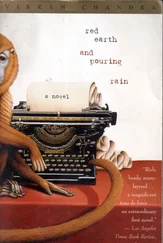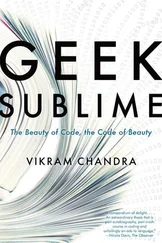Vikram Seth - A Suitable Boy
Здесь есть возможность читать онлайн «Vikram Seth - A Suitable Boy» весь текст электронной книги совершенно бесплатно (целиком полную версию без сокращений). В некоторых случаях можно слушать аудио, скачать через торрент в формате fb2 и присутствует краткое содержание. Год выпуска: 2012, Издательство: Orion Publishing Co, Жанр: Современная проза, на английском языке. Описание произведения, (предисловие) а так же отзывы посетителей доступны на портале библиотеки ЛибКат.
- Название:A Suitable Boy
- Автор:
- Издательство:Orion Publishing Co
- Жанр:
- Год:2012
- ISBN:нет данных
- Рейтинг книги:5 / 5. Голосов: 1
-
Избранное:Добавить в избранное
- Отзывы:
-
Ваша оценка:
- 100
- 1
- 2
- 3
- 4
- 5
A Suitable Boy: краткое содержание, описание и аннотация
Предлагаем к чтению аннотацию, описание, краткое содержание или предисловие (зависит от того, что написал сам автор книги «A Suitable Boy»). Если вы не нашли необходимую информацию о книге — напишите в комментариях, мы постараемся отыскать её.
A Suitable Boy — читать онлайн бесплатно полную книгу (весь текст) целиком
Ниже представлен текст книги, разбитый по страницам. Система сохранения места последней прочитанной страницы, позволяет с удобством читать онлайн бесплатно книгу «A Suitable Boy», без необходимости каждый раз заново искать на чём Вы остановились. Поставьте закладку, и сможете в любой момент перейти на страницу, на которой закончили чтение.
Интервал:
Закладка:
‘Do be quiet, Bibbo!’ said Saeeda Bai impatiently. And Bibbo, glad to have elicited for once at least some reaction from her mistress, kept up the attack.
‘Give thanks for Bilgrami Sahib,’ said Bibbo. ‘Without him where would all of us be?’
Saeeda Bai clicked her tongue and made a gesture of dismissal.
‘Give thanks also to your mightiest admirer, who has spared us his attentions of late,’ continued Bibbo.
Saeeda Bai glared. The Raja of Marh had been apparently dormant only because he had been busy with his plans to consecrate his temple with the installation of the ancient Shiva-linga.
‘Poor Miya Mitthu,’ murmured Bibbo sadly. ‘He will forget how to squawk, “Whisky!”’
One day, to stop Bibbo’s inane prattling, which was more painful than she intended, Saeeda Bai told her to fetch her harmonium, and let her fingers move up and down the mother-of-pearl keys. But she could not control her thoughts any more than she could in her bedroom, where the framed picture from Maan’s book looked down at her from the wall. She called for that book now, and placed it on the harmonium, turning its pages one by one, pausing less at the poems than at the illustrations. She came across the picture of the grief-stricken woman in the cemetery.
I have not visited my mother’s grave now for a month, she thought. In my new idiocy as a rejected lover I am neglecting my duties as a daughter. But the more she tried to avoid thinking of herself and the hopelessness of her love for Maan, the more it oppressed her.
And what of Tasneem? she thought. It was worse for her, Saeeda Bai reflected, than for herself. Poor girl, she had become more silent than that godforsaken parakeet. Ishaq, Rasheed, Firoz — three men had come into her life, each more impossible than the last, and in each case she had let her affection grow in silence, and had suffered their sudden absence in silence. She had seen Firoz wounded, her sister almost strangled; she had probably heard, though her strange silence gave no indication of it, of the rumours surrounding herself. What did she think of men now? Or of Saeeda Bai herself if she believed what she heard?
What can I do to help her? thought Saeeda Bai. But there was nothing to be done. To talk to Tasneem about anything that mattered was not within the bounds of possibility.
Though it was evening, and the first few stars had begun to appear in the sky, Saeeda Bai began to hum to herself the lines of Minai’s poem announcing the arrival of dawn. It reminded her of the garden in Prem Nivas that carefree evening, and all the grief and pain that had intervened. Tears were in her voice, but not in her eyes. Bibbo came and listened, and Tasneem too walked quietly up from her room to hear what had become so rare. She herself knew the poem by heart, but, entranced by her sister’s voice, she did not even murmur the words under her breath:
The meeting has dispersed; the moths
Bid farewell to the candle-light.
Departure’s hour is on the sky.
Only a few stars mark the night.
What has remained will not remain:
They too will quickly disappear.
This is the world’s way, although we,
Lost to the world, lie sleeping here.
18.33
Rasheed walked along the parapet of the Barsaat Mahal, his thoughts blurred with hunger and confusion.
Darkness, and the river, and the cool marble wall.
Somewhere where there is nowhere.
It gnaws. They are all around me, the elders of Sagal.
No father, no mother, no child, no wife,
Like a jewel above the water. The parapet, the garden under which a river flows.
No Satan, no God, no Iblis, no Gabriel.
Endless, endless, endless, endless, the waters of the Ganga.
The stars above, below.
. . and some were seized by the Cry, and some
We made the earth to swallow, and some We
drowned; God would never wrong them, but
they wronged themselves.
Peace. No prayers. No more prayers.
To sleep is better than to pray.
O my creature, you gave your life too soon. I have made your entry into Paradise unlawful.
A spring in Paradise.
O God, O God.
18.34
Further down the Ganga, with pomp and practicality, other preparations were proceeding.
The great Shiva-linga was about the size that the priest’s mantras had said it would be, and in about the same position under the Ganga. But layers of sand and silt covered it. It was some days before it was finally exposed below the murky water, and some days more before it was hoisted up by winches to the first broad step of the cremation ghat above water-level. There it lay beside the Ganga in which it had rested for centuries, at first merely caked with clay and grit, then washed with water and milk and ghee till its black granitic mass glistened in the sun.
People came from far to gaze and to gape, to admire and to worship it. Old women came to do puja: to sing and to recite and to offer flowers and to smear the head of the hereditary pujari with sandalwood paste. It was a propitious combination: the linga of Shiva, and the river that had emerged from his hair.
The Raja of Marh had summoned historians and engineers and astrologers and priests, for preparations now had to be made for the journey of the linga up the grand steps of the cremation ghat, through the dense alleys of Old Brahmpur, into the open space of Chowk, and thence to its place of final, triumphal, reconsecrated rest: the sanctum of the completed temple.
The historians attempted to obtain information about the logistics of other, similar enterprises, such as, for example, the transfer of Ashoka’s pillar from near Ambala to Delhi by Firoz Shah — a Buddhist pillar moved by a Muslim king, reflected the Raja of Marh with bifurcated contempt. The engineers worked out that the cylinder of stone, twenty-five feet long, two feet in diameter, and weighing more than six tons, would require two hundred men to haul it safely up the steep steps of the ghat. (The Raja had forbidden the use of winches or pulleys for the unique and dramatic ceremony.) The astrologers calculated an auspicious time, and informed the Raja that if it was not done in a week, he would have to wait for another four months. And the newly appointed priests of the new Chandrachur Temple made plans for auspicious rituals along the route and a vast, festive reception at its destination, so close to where it had stood in the time of Aurangzeb.
The Muslims had tried through the Alamgiri Masjid Hifaazat Committee to obtain an injunction against the installation of the profane monolith behind the western wall, but to no avail. The Raja’s title to the land on which the temple stood, now transferred to a trust run by the Linga Rakshak Samiti and dominated by him, was legally clear.
Even among the Hindus, however, there were some who felt that the linga should be left near the cremation ghat — for that was where ten generations of pujaris had prayed to it in sorrow and destitution, and where it would remind worshippers not only of the generative force of Shiva Mahadeva but of his destructive power as well. The hereditary pujari, having prayed to the visible linga in a kind of ecstasy, now claimed that it had already found its proper home. It should be fixed on the low, broad step where it had chanced to rest, and where it had once again been seen and worshipped by the people — and as the Ganga rose or fell with the seasons, it too should appear to sink or rise.
But the Raja of Marh and the Linga Rakshak Samiti would not have it. The pujari had fulfilled his function as an informant. The linga had been found; it had been raised; it would be raised further still. It was not for one ragged, ecstatic pujari to obstruct enterprises of such great moment.
Читать дальшеИнтервал:
Закладка:
Похожие книги на «A Suitable Boy»
Представляем Вашему вниманию похожие книги на «A Suitable Boy» списком для выбора. Мы отобрали схожую по названию и смыслу литературу в надежде предоставить читателям больше вариантов отыскать новые, интересные, ещё непрочитанные произведения.
Обсуждение, отзывы о книге «A Suitable Boy» и просто собственные мнения читателей. Оставьте ваши комментарии, напишите, что Вы думаете о произведении, его смысле или главных героях. Укажите что конкретно понравилось, а что нет, и почему Вы так считаете.











